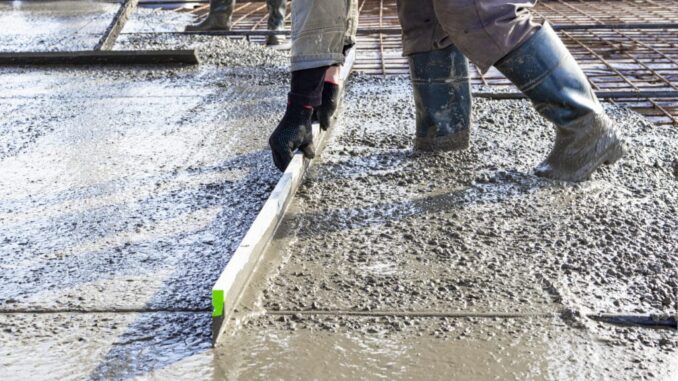
Concrete is one of the world’s most frequently used materials, from home foundations to tallest buildings and bridges.
Concreting Melbourne is created from a blend of cement, aggregates (ranging from fine sand to crushed stone), and water. Utilizing appropriate quantities for each ingredient is crucial in producing high-quality concrete.
Mixing
Concrete is a composite material composed of cement, aggregates (such as gravel and crushed stone), water, and additives which must be properly mixed, transported, placed, and compacted for quality results. Concrete can be found everywhere from buildings, roads, bridges to driveways and sidewalks – even non-structural elements like driveways and sidewalks! Its use in construction makes concrete indispensable.
Mixing is the process of thoroughly mixing all of the components that go into concrete to form a uniform mixture. A concrete producer will provide their design mix specifications, which must be closely adhered to if you wish for high strength, workable results.
At its heart, batching involves using a truck-mounted volumetric mixing and weighing system that produces ready-mix concrete in relatively exact quantities. This “plant on wheels” features bins for sand, coarse aggregate, cement and water as well as longitudinal belts that transport materials through adjustable gates into a mixer where flow meters control water addition as well as any additives such as admixtures; then it is slowly stirred before being transported to job sites.
Pouring
Concrete is typically applied as a wet, viscous fluid into a form or mold for its final form. These molds may be assembled on site or prepared at a factory setting, with various additives like pozzolans and superplasticizers added to improve its workability and strength.
Prior to pouring concrete, it’s essential to ensure the worksite is safe and ready. This includes obtaining all required permits as well as calling the local “call before you dig” number to mark any underground pipes or wires.
As part of a mix design, it’s also crucial that weather conditions are ideal when pouring concrete. Since concrete contains water, extreme cold or heat temperatures could alter its chemical reaction that creates hard concrete. When selecting an appropriate amount of water, cement, and aggregate for pouring, mix designs provide guidance.
Placement
Concrete is one of the world’s most-used construction materials, but for optimal strength it must be handled and placed correctly. Concrete consists of water, aggregates (such as sand and gravel), and cement; their proportions may be varied to suit specific uses.
Mixing concrete takes time and precision for best results. A reliable batching operation employs scales to accurately weigh each component, enabling rapid adjustments of mixture parameters if necessary.
Based on your job requirements, concrete may either be mixed on-site using a portable mixer, or delivered as ready-mixed concrete in the familiar rotating truck. This delivery option reduces storage requirements at jobsite and mixing time by eliminating massive storage needs. When transporting concrete it must be protected from extreme temperatures while remaining moist to prevent segregation of coarse aggregate particles during transportation; once at site it may either be poured directly in place or precast into shapes.
Curing
Concrete must be mixed, transported, placed, compacted and cured according to specifications in order for its final product to meet all necessary characteristics and strengths. The process can be complex and takes many steps; careful attention must be paid in each step and quality control measures taken so as to produce products which exceed specifications.
Concrete has very high compressive strength but lower tensile strength; to address this, concrete is often reinforced with materials with stronger tension strengths such as steel rebar.
To increase its tensile strength, concrete must be allowed to cure under controlled conditions that allow its cement content to hydrate properly – this requires providing moisture, ideal temperature conditions and sufficient time.
To produce quality concrete, it is imperative that each ingredient be added at precisely the right amount; this can be accomplished using volumetric or weight batching systems.
